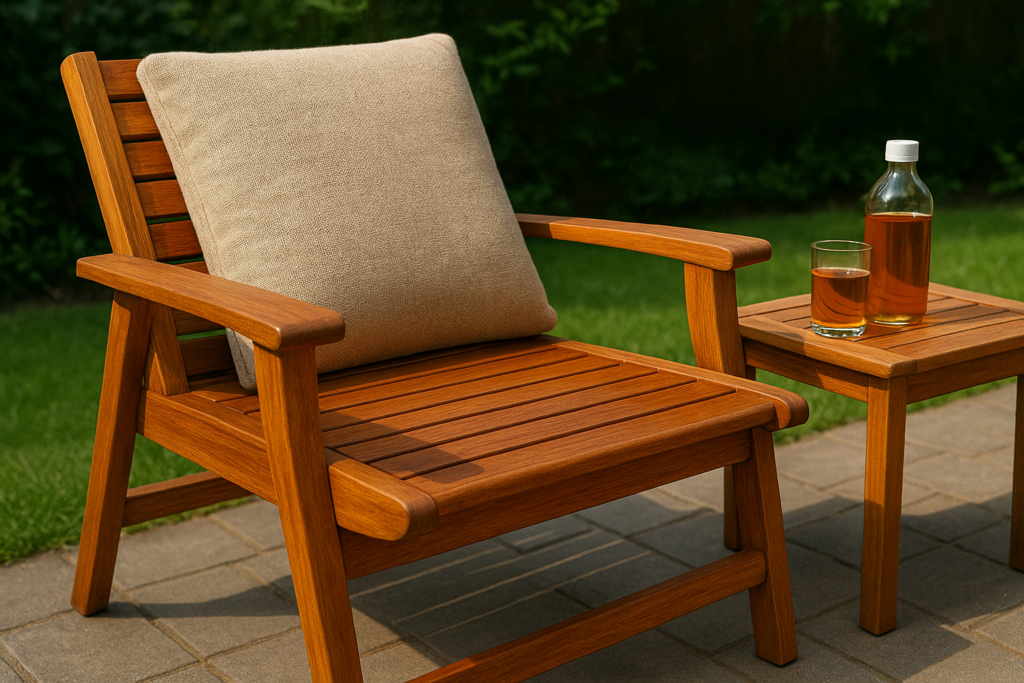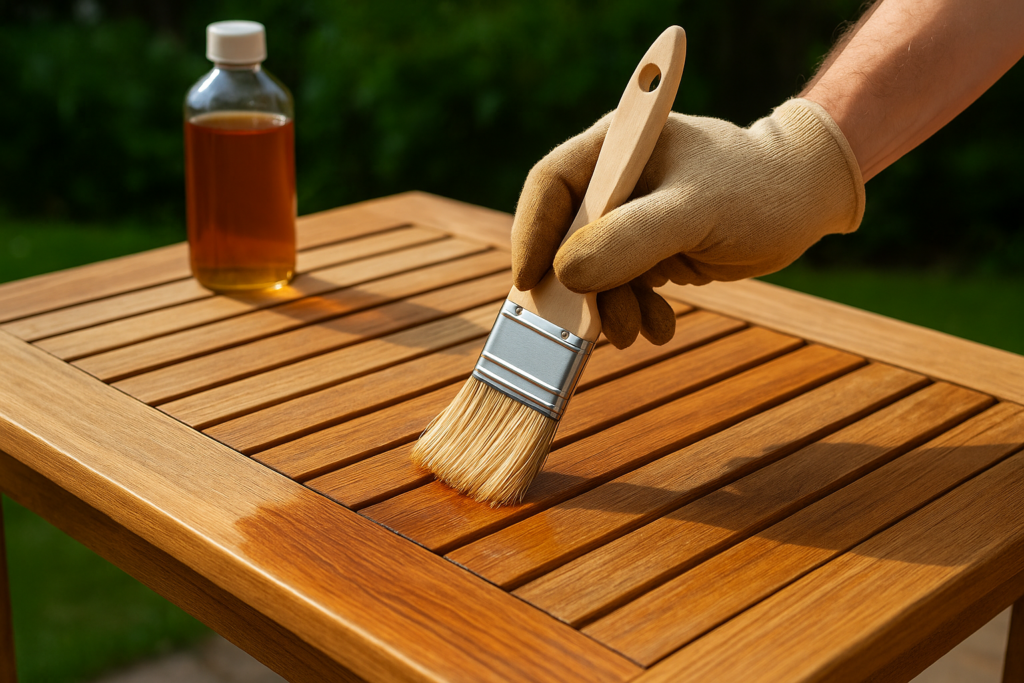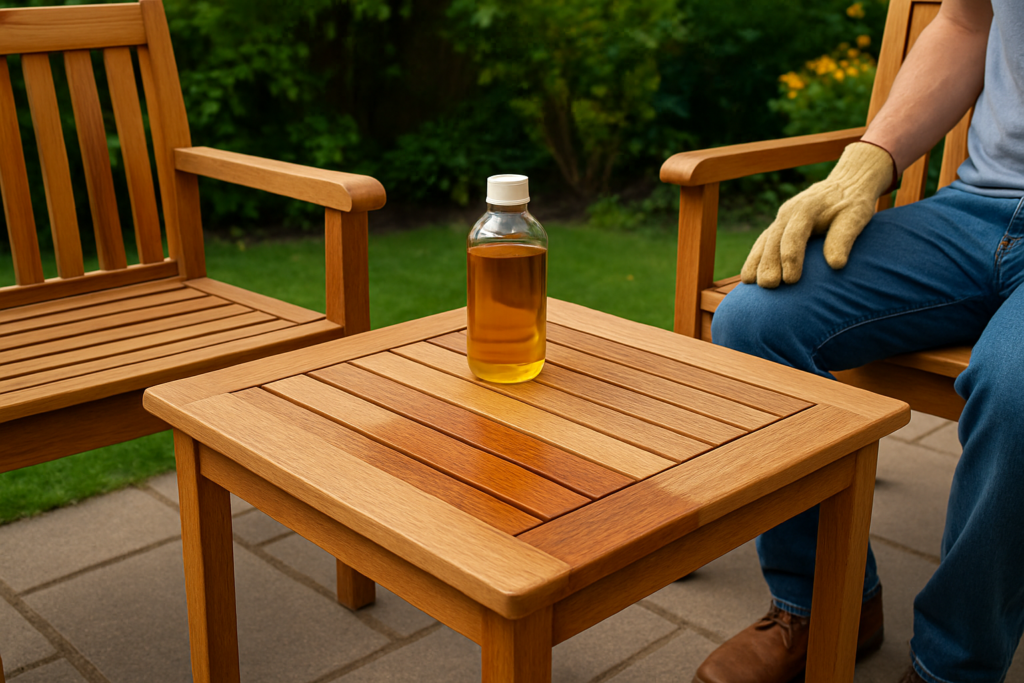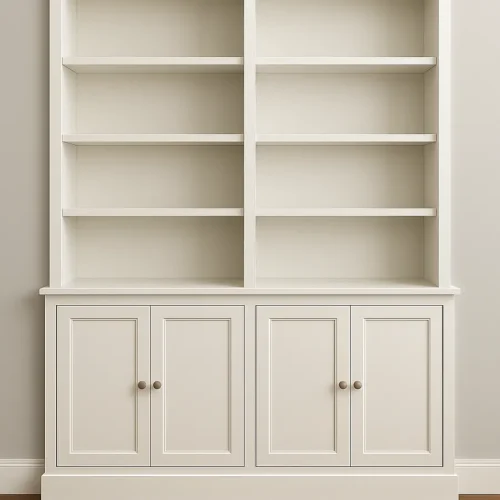Teak furniture is timeless. Its golden honey tones, durability, and resistance to pests make it one of the most sought-after woods for both indoor and outdoor use. But if you’ve ever bought a teak table, chair, or vanity, you’ve probably asked yourself: how to oil teak furniture the right way?
That’s a good question. While teak naturally produces its own oils, many homeowners prefer to enhance its look with additional oil treatments. Done right, oiling teak furniture can bring out its warm tones and add depth to the grain. Done wrong, though, it can weaken the wood and create long-term maintenance headaches.
Let’s dive into everything you need to know about how to oil teak furniture—from preparation to application, and even when not to oil at all.
What is Teak Wood?

Teak wood has been a favorite in furniture making for centuries. Native to Southeast Asia, teak is a dense hardwood with natural oils that make it water-resistant and highly durable. Those oils also make it less prone to termites, mold, and mildew.
Fresh teak starts with a golden honey color. Over time, it develops a silvery-gray patina when exposed to sunlight and weather. Some people love this natural aging process. Others want to preserve the warm glow—and that’s where treatments like oiling or sealing come in.
Should You Oil Teak Furniture?
Here’s the truth: teak does not need oiling to last. Its natural oils already protect it from the elements. That’s why many manufacturers advise against applying processed oils.
But there’s nuance here. Oiling teak furniture can:
- Enhance its golden color and grain.
- Make it look freshly polished.
- Restore luster after cleaning or sanding.
On the downside, oiling can:
- Disrupt teak’s natural oiling process.
- Make the furniture dependent on frequent reapplications (every 2–3 months).
- Encourage mildew growth if applied incorrectly.
So, should you oil? If you love the rich honey tones and don’t mind upkeep, oiling is a valid option. If you prefer low maintenance, consider leaving the wood to age naturally or applying a teak sealer instead.
Preparing Teak Furniture Before Oiling
The success of oiling depends on proper preparation. Never apply oil to dirty or damp teak—it’ll trap moisture, dirt, and mildew inside.
Step 1: Clean the Furniture
- Mix 1 gallon of warm water with 1 cup of vinegar (or mild dish soap).
- Dampen the surface with clean water first.
- Scrub with a soft sponge or plastic brush, always moving along the grain.
- Rinse lightly with fresh water.
- Avoid high-pressure hoses that can damage the wood.
If the furniture has heavy stains or mildew, you may need a specialized teak cleaner.
Step 2: Remove Previous Treatments
If your furniture has old oil or sealer, sanding is necessary.
- Use fine-grit sandpaper (220 grit works well).
- Sand gently, following the grain.
- Wipe away all dust with a clean, dry cloth.
Step 3: Let the Teak Dry Completely
Moisture is oil’s worst enemy. Leave your furniture to dry in the sun for at least 24 hours. If indoors, allow extra time.
Step-by-Step Guide: How to Oil Teak Furniture

Once your furniture is clean and dry, it’s time to oil.
Materials You’ll Need
- Teak oil (look for UV protection if outdoors)
- Natural bristle brush or lint-free cloth
- Fine-grit sandpaper (optional for touch-ups)
- Clean cloths for wiping excess oil
Step 1: Apply the First Coat
Dip your brush or cloth into the teak oil and spread evenly across the surface. Work in the direction of the wood grain.
Step 2: Wipe Off Excess Oil
After a few minutes, use a clean lint-free cloth to remove any oil sitting on the surface. Leaving it on will create a sticky residue.
Step 3: Let It Dry
Allow the oil to dry for 2–4 hours in a well-ventilated space. For outdoor furniture, dry in the sun if possible.
Step 4: Apply Additional Coats
Repeat the process until the wood no longer absorbs oil—usually 2–5 coats, depending on the condition of the furniture. Always wipe away excess oil between coats.
Step 5: Final Drying
Once complete, let your furniture dry for at least 24 hours before using it again.
Maintenance After Oiling
Oiled teak needs regular upkeep. Unlike sealing, which lasts up to a year, oiling fades within a couple of months.
- Reapply every 2–3 months if your teak is outdoors.
- Indoor teak may only need oil once or twice a year.
- Always clean before re-oiling to avoid buildup.
Keep a soft cloth nearby for quick wipe-downs after spills. This prevents stains and extends the time between treatments.
Alternatives to Oiling
If maintenance isn’t your thing, consider these alternatives:
- Teak Sealer/Protector – Preserves the golden color longer, protects against UV, and needs only yearly reapplication.
- Natural Patina – Letting teak age naturally to a silvery-gray requires no treatments and suits modern, rustic aesthetics.
Common Mistakes to Avoid

When learning how to oil teak furniture, many homeowners make the same errors:
- Over-oiling – Leads to sticky residue and mildew.
- Using the wrong tools – Metal brushes or rough sponges scratch the wood.
- Skipping cleaning – Traps dirt and moisture inside the oil coat.
- Applying on wet wood – Prevents oil absorption and encourages fungus.
- Using generic oils – Always choose oil designed for teak.
Final Thoughts
Now you know exactly how to oil teak furniture—and when you might not want to. Oiling can revive your furniture’s natural warmth and give it that polished, honey-gold glow. But it’s a commitment. If you decide to oil, follow the cleaning and application steps carefully, and be ready for regular upkeep.
For those who prefer less maintenance, sealing or letting teak age naturally are excellent alternatives. Either way, your teak furniture can last for decades with the right care.
Teak is an investment. Treat it well, and it will keep your home or outdoor space looking beautiful for generations.













